Mind blown
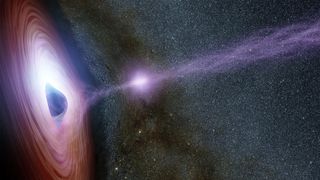
Is there anything stranger in the universe than black holes? These bizarre, gravitational monstrosities don't only warp space and time; just thinking about them stretches and bends people's imaginations as well. And along with all the mind-boggling qualities you might have heard of — their prodigious mass, their incredibly small size — black holes have a ton of even more outlandish properties that are less well known. We take a look at some of the most astounding characteristics and theoretical possibilities regarding these cosmic oddities.
Black holes might have hair
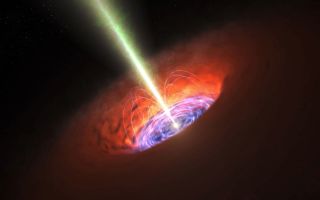
In the 1960s, physicist John Wheeler suggested that black holes "have no hair," meaning that each particular cosmic object could only be distinguished from its brethren by its spin, angular momentum and mass. Any other differentiating information about a black hole is considered "hair," and is thought to disappear behind a black hole's impenetrable event horizon, a boundary around the black hole beyond which nothing, including light, can escape.
Cut to 2016, when famed physicist Stephen Hawking proposed that black holes actually sport an opulent hairdo made of ghostly, zero-energy particles, and that this hirsute agglomeration contains information about material the black hole has consumed. This hypothesis has not been proven, but could help solve a longstanding paradox about what happens to gas and dust that has fallen into a black hole's maw.
Black holes produce fountains
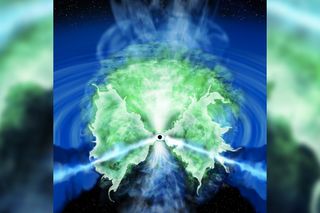
Nothing is supposed to be able to escape a black hole's powerful gravitational grip. But that only applies to material that has gotten extremely close to the hole's edge. Many black holes are, in fact, surrounded by streams of gas and dust, which circle around the hole, like water going down a drain. Friction in this material generates heat, which creates churning, storm-like structures in the gas and dust. Recent observations suggest that this motion also produces arching rings that surround inner columns of matter, which shoots straight into the air, strongly resembling fountains.
Black holes can evaporate
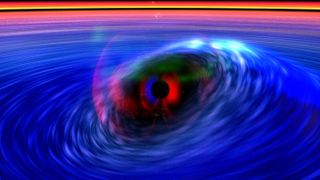
Quantum mechanics provides another way for particles to escape a black hole. According to theory, pairs of subatomic particles are constantly blinking in and out of existence around a black hole's event horizon. Every so often, the configuration is aligned in just the right way to cause one of the partners to fall into the black hole. The particle's identical associate is then propelled away at extremely high speed, robbing the black hole of a tiny bit of energy. This produces what's known as Hawking radiation, after Stephen Hawking, who discovered the phenomenon. Because energy equals mass, this process actually can cause a black hole to shrink and eventually evaporate away over long periods of time.
Black holes may be surrounded by a wall of fire
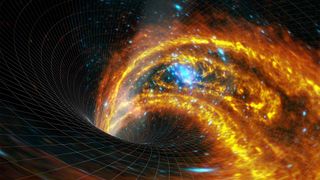
One of the problems with Hawking radiation is that it causes conundrums for physicists. The subatomic particles produced by this radiation are entangled, meaning that what happens to one is immediately felt by the other. So what does the partner that didn't fall into the black hole feel as its associate gets crushed into an infinitely dense point? Nobody knows. One theory holds that the black hole severs the particles' entanglement, an outcome that — according to the laws of quantum mechanics – would produce an insane amount of energy. That, in turn, would mean that all black holes are surrounded by roiling walls of fire.
Black hole might scramble information, or not
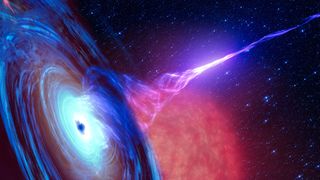
It's hard to square black holes' crushing mass with the laws of quantum mechanics, which hold that information about particles can never be destroyed. But material that slips beyond a black hole's edge should become forever lost to the universe. This conundrum is known as the black hole information paradox; a resolution has eluded scientists to date. Recent research suggests that information that gets scrambled within a black hole could be passed to the outgoing particle partners in Hawking radiation; however, no definitive answer to this paradox has been found.
Black holes could be dark matter
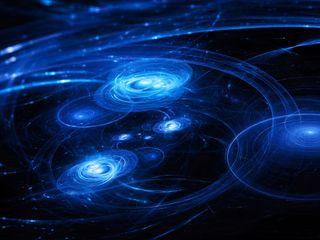
Shortly after the Big Bang, the universe should have produced a multitude of tiny black holes. Because these features would be massive objects that give off no light, some physicists have conjectured that these primordial black holes could account for dark matter, that mysterious material that the vast majority of matter in the cosmos is made of. But the idea is controversial, given that data from the Laser Interferometer Gravitational-Wave Observatory (LIGO) has ruled out a universe filled with many minuscule black holes. Perhaps medium-size black holes might still be lurking out there, though observations suggest they would only make up, at most, 1% to 10% of dark matter.
Sign up for the Live Science daily newsletter now
Get the world’s most fascinating discoveries delivered straight to your inbox.
Matter may travel to the future in a black hole
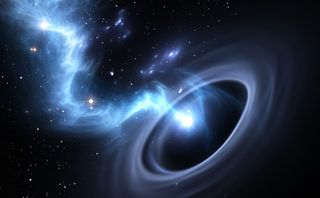
Black holes run into the problem of infinity — a black hole's mass is crushed to an infinitely dense point that's infinitely small in size. Physically, this doesn't make any sense, so researchers have searched for alternative frameworks to get a handle on black holes. One proposal is known as quantum loop gravity, which suggests that the fabric of space-time is curved very strongly near the center of the black hole. This would result in part of the hole extending into the future, meaning that matter getting sucked into it would time travel forward. So far, this mind-expanding idea remains theoretical.
Scientists might have spotted black holes from another universe
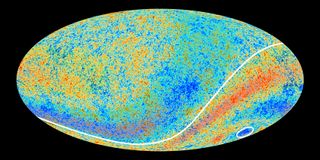
One highly-controversial observation suggests that our universe is a latecomer. Earlier universes might have existed before ours, and would have contained black holes. Prominent Oxford University mathematical physicist Roger Penrose has argued that cosmic background radiation — an energetic relic from the Big Bang — contains imprints of these black holes from before time. Other scientists have argued that Penrose's data is nothing more than random noise, but the possibility remains intriguing.
We will soon have a picture of a black hole
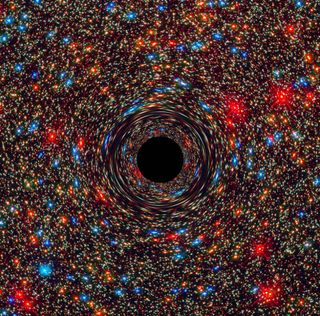
In a matter of days, physicists are set to release the first-ever image of a black hole. This supermassive beast lurks at the heart of our Milky Way galaxy; capturing a photo of it has been the aim of the Event Horizon Telescope. This instrument is actually a global network of radio telescopes all over the Earth, which have combined their powers to zoom in closer to the galactic center than ever before. The telescope should be able to spot the black hole's shadow across its material surrounding, and images are expected on April 10.
Originally published on Live Science.

Adam Mann is a freelance journalist with over a decade of experience, specializing in astronomy and physics stories. He has a bachelor's degree in astrophysics from UC Berkeley. His work has appeared in the New Yorker, New York Times, National Geographic, Wall Street Journal, Wired, Nature, Science, and many other places. He lives in Oakland, California, where he enjoys riding his bike.
Most Popular

